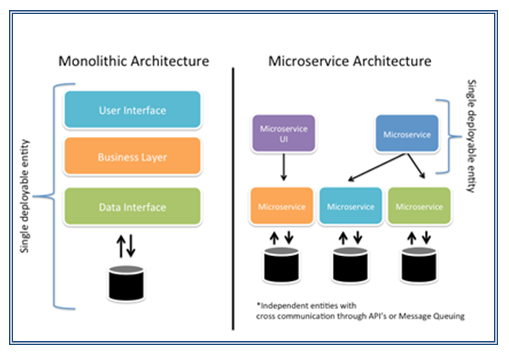Microservices: The Future of Software Development
 Rohith Namala
Rohith Namala
As a student of computer science, you may have heard of the term "microservices". Microservices are a relatively new approach to software development that has been gaining popularity in recent years. But what exactly are microservices, and why are they becoming increasingly popular?
What are microservices?
In simple terms, microservices are a way of building software applications by breaking them down into smaller, independent components. Each microservice is designed to perform a specific function and can be developed, deployed, and scaled independently of the other microservices in the system. This approach is in contrast to monolithic architectures, where the entire application is built as a single, tightly-coupled unit.
The benefits of microservices
There are several advantages to using microservices in software development. First, microservices allow for greater flexibility and agility in the development process. Because each microservice is developed and deployed independently, changes can be made to one component without affecting the others. This means that new features can be added or existing ones can be modified without having to re-deploy the entire application.
Second, microservices allow for greater scalability and reliability. By breaking the application down into smaller components, it is easier to scale individual services up or down as needed. Additionally, if one microservice fails, it does not necessarily mean that the entire application will fail. This makes it easier to diagnose and fix problems, and ensures that the application remains up and running even if one part of it is not functioning correctly.
Finally, microservices allow for greater innovation and experimentation. Because each microservice is independent, it is possible to use different technologies and programming languages for each component. This allows developers to choose the best tools for the job, rather than being restricted to a single technology stack for the entire application.

The challenges of microservices
Of course, there are also some challenges associated with using microservices. For example, designing a system composed of many small, independent components can be complex and requires careful planning. Additionally, the increased complexity of microservices architectures can make it more difficult to test and debug the system as a whole.

How to design a microservices architecture
To design a microservices architecture, it is important to start with a clear understanding of the business requirements and how they can be broken down into smaller, independent services. Each microservice should have a well-defined API that other services can use to communicate with it. It is also important to consider issues such as data consistency and service discovery when designing a microservices architecture.

Tools and technologies for microservices
There are several tools and technologies that can be used to develop and manage microservices, such as Kubernetes, Docker, and service meshes like Istio. These tools can help with containerization, deployment, scaling, and service discovery, among other things.
In conclusion, microservices represent a significant shift in the way that software applications are developed. By breaking down applications into smaller, independent components, developers can create more flexible, scalable, and reliable systems. While there are challenges associated with using microservices, the benefits they offer make them an attractive option for software development in the future. As a student of computer science, it is important to stay up-to-date with new approaches to software development like microservices in order to stay competitive in the job market and contribute to the development of innovative new applications.
Subscribe to my newsletter
Read articles from Rohith Namala directly inside your inbox. Subscribe to the newsletter, and don't miss out.
Written by

Rohith Namala
Rohith Namala
With a passion for automating software development.